Audio tour highlights historic preservation flash points in Philly’s Old City
-
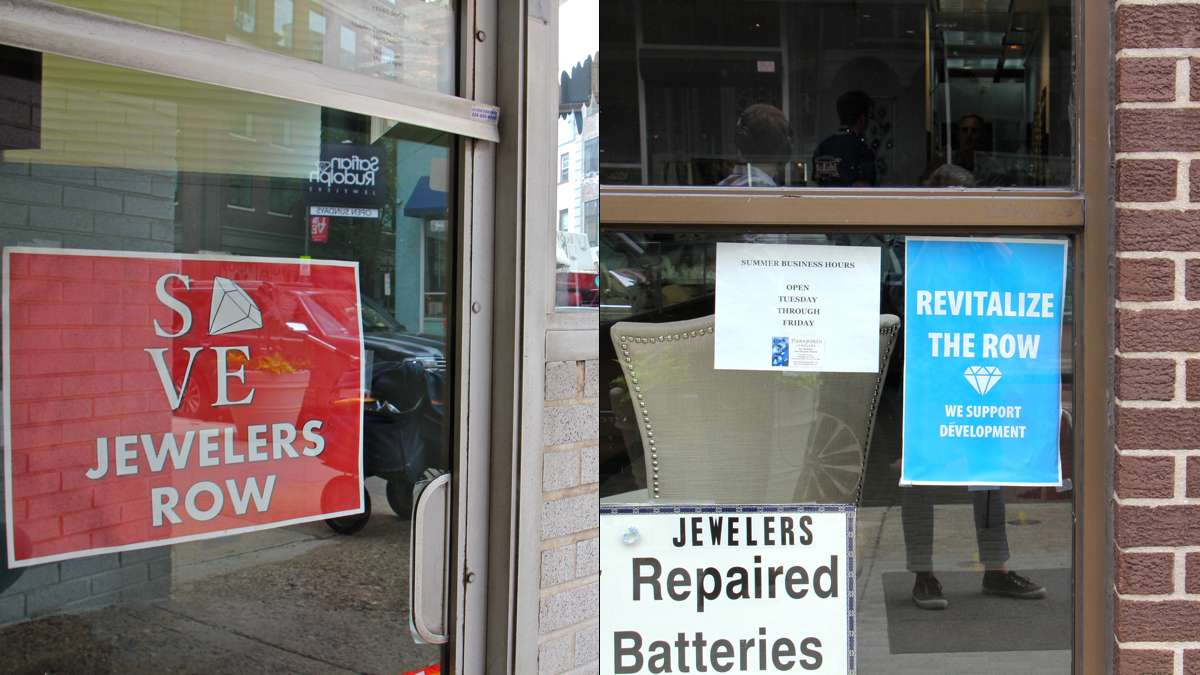
The controversial Toll Brothers tower project has supporters and opponents on the row. (Emma Lee/WHYY)
-
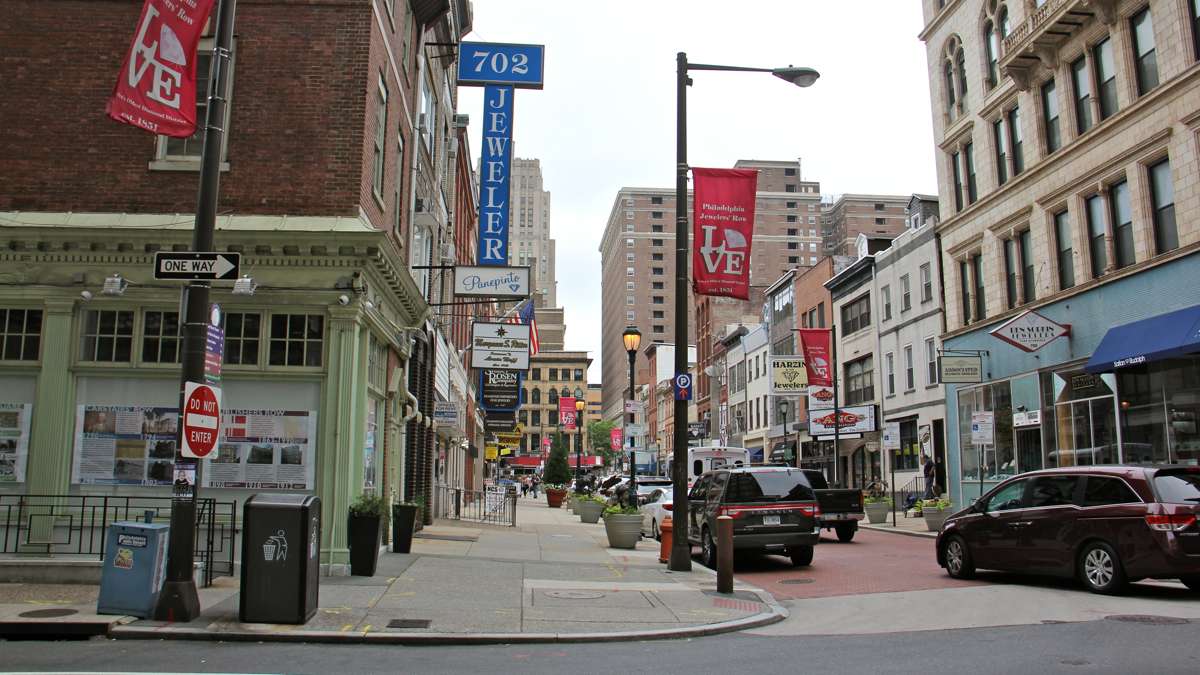
Jewelers Row, described in the tour as ''one of most iconic commercial districts in America,'' is threatened by a plan to construct a 29-story residential tower. (Emma Lee/WHYY)
-

The Rohm and Haas chandeliers have been nominated for historic protection. (Emma Lee/WHYY)
-
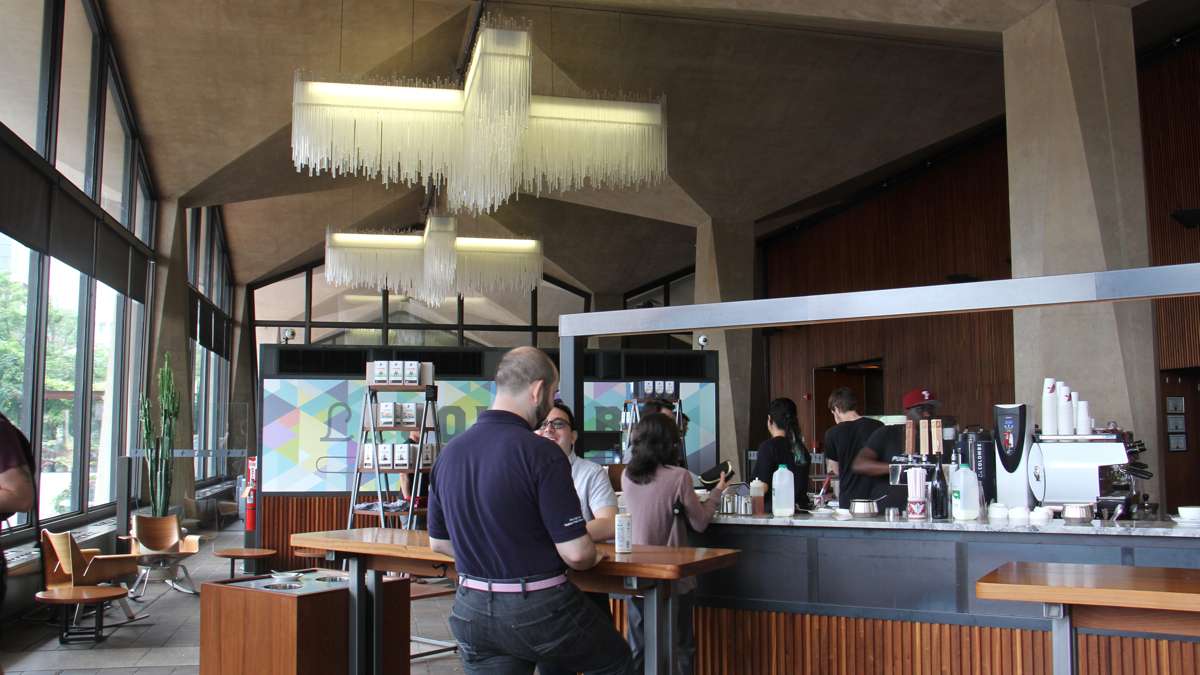
Once the headquarters for the Rohm and Haas chemical company, the building at 100 Independence Mall West still has chandeliers made of Plexiglas, the company's signature product. (Emma Lee/WHYY)
-
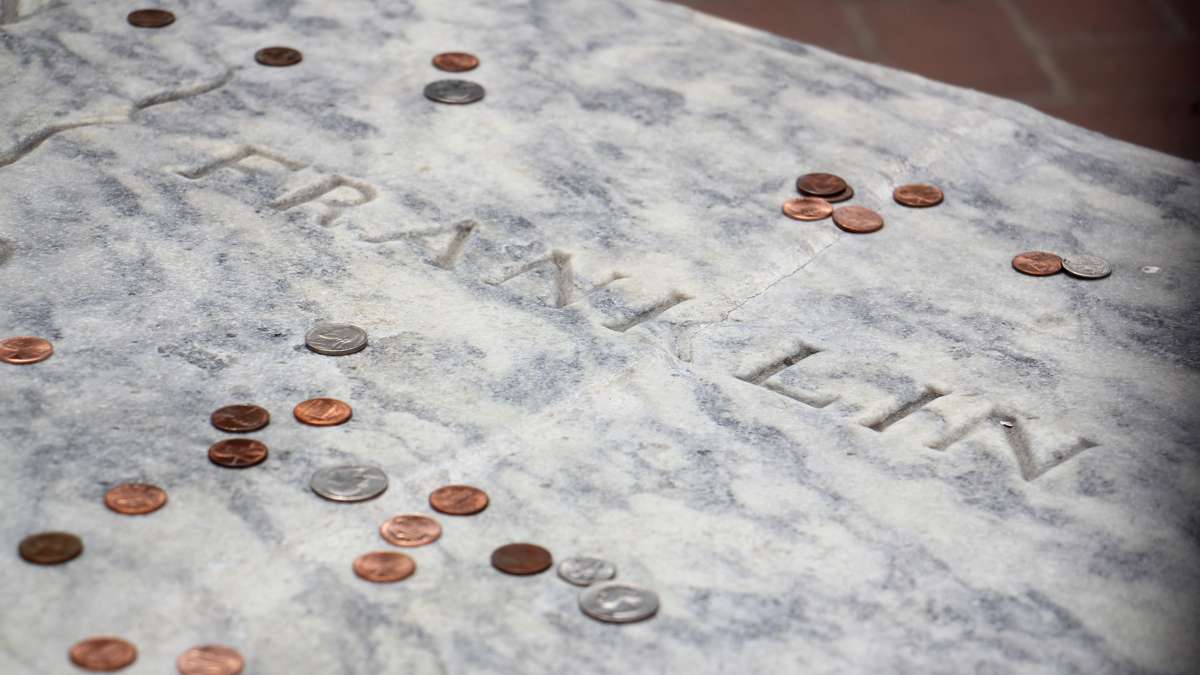
An urban legend claims that damage to Franklin's gravestone was caused by visitors dropping pennies on the marble, but the recently repaired crack was more likely caused by a renovation in the 1950s that resulted in poor drainage. (Emma Lee/WHYY)
-
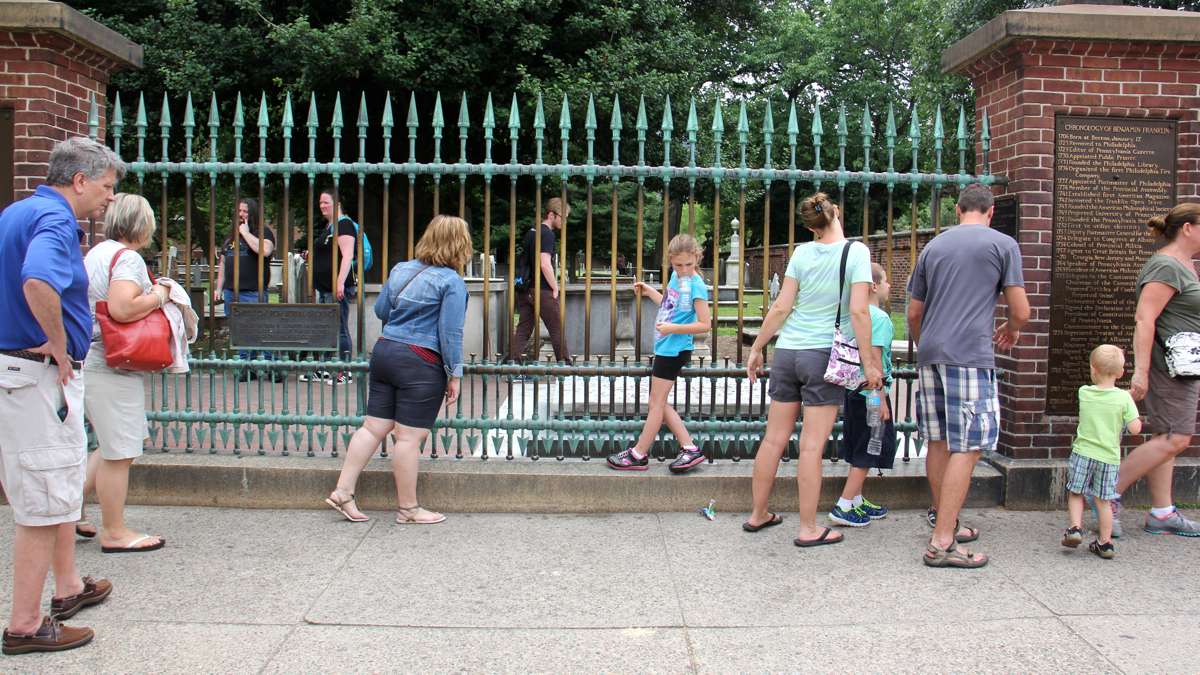
Ben Franklin's grave in Christ Church Burial Ground at 5th and Arch streets was made accessible to the public in 1858 when a section of brick wall was replaced by a fence. (Emma Lee/WHYY)
-
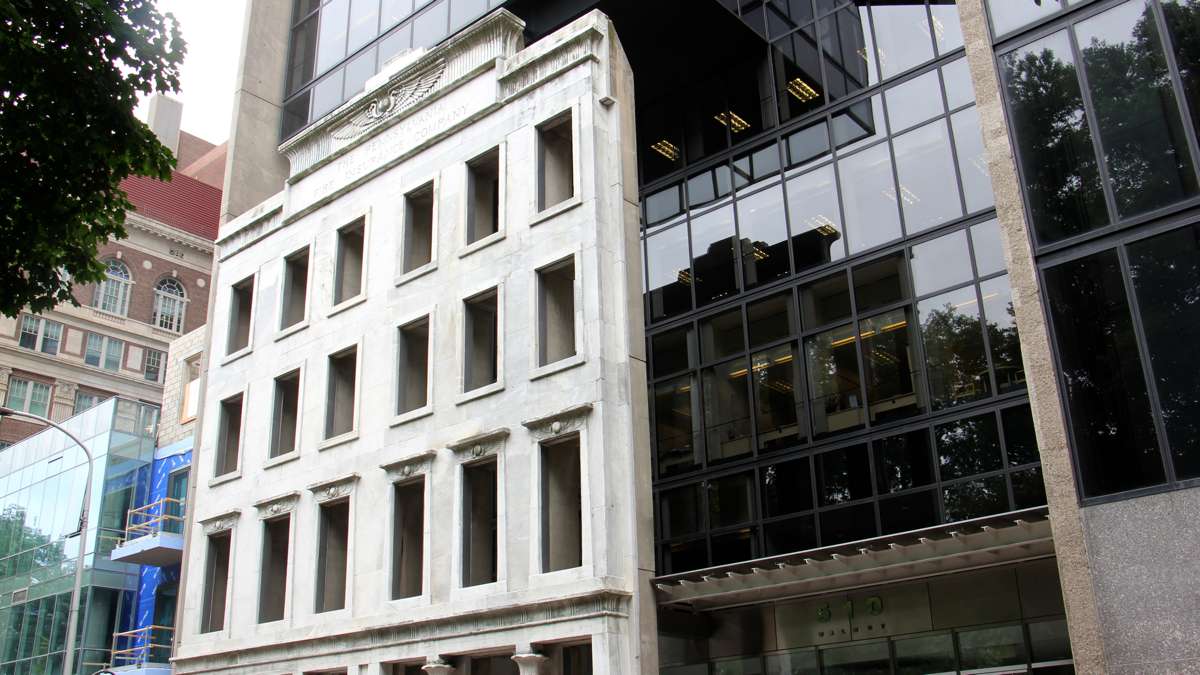
This is an example of facadism, preservation of the look and feel of a building while allowing new uses. (Emma Lee/WHYY)
-
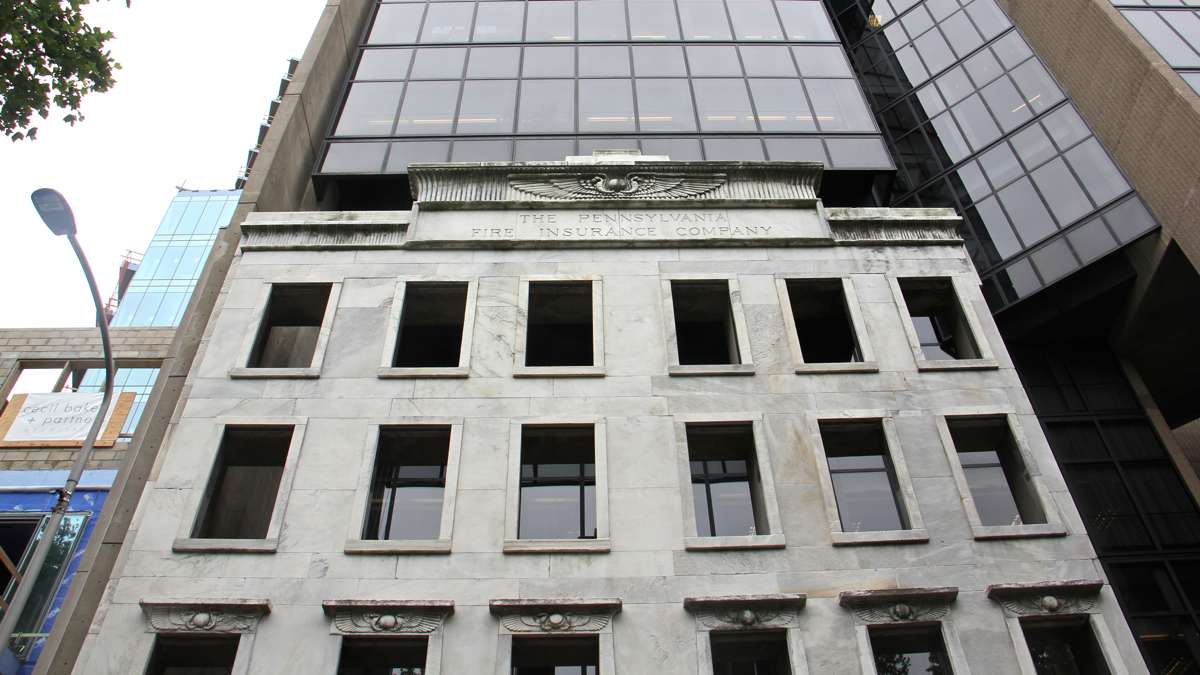
All that remains of the Pennsylvania Fire Insurance Company, built in 1838, is a four-story facade in front of a modern office building. (Emma Lee/WHYY)
-
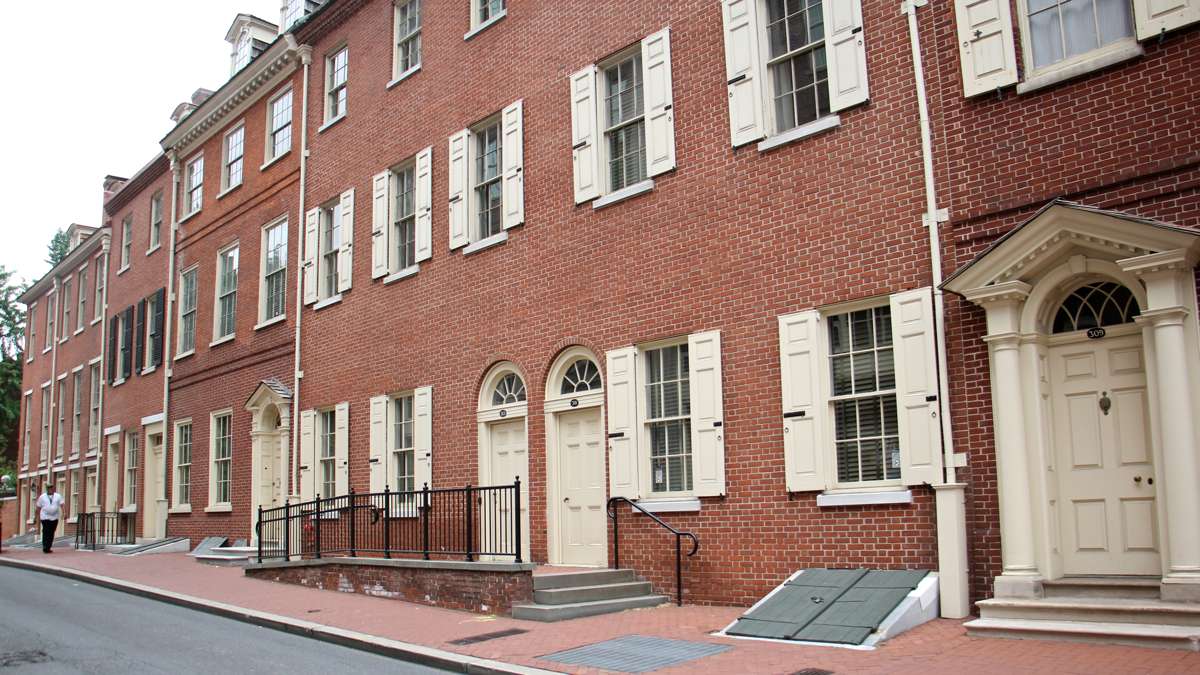
The tour takes listeners past a row of homes on Walnut Street. The buildings between the Bishop White House and the home of Dolley Todd Madison were actually built in the 20th century by the National Park Service to resemble 18th century historic homes. (Emma Lee/WHYY)
-
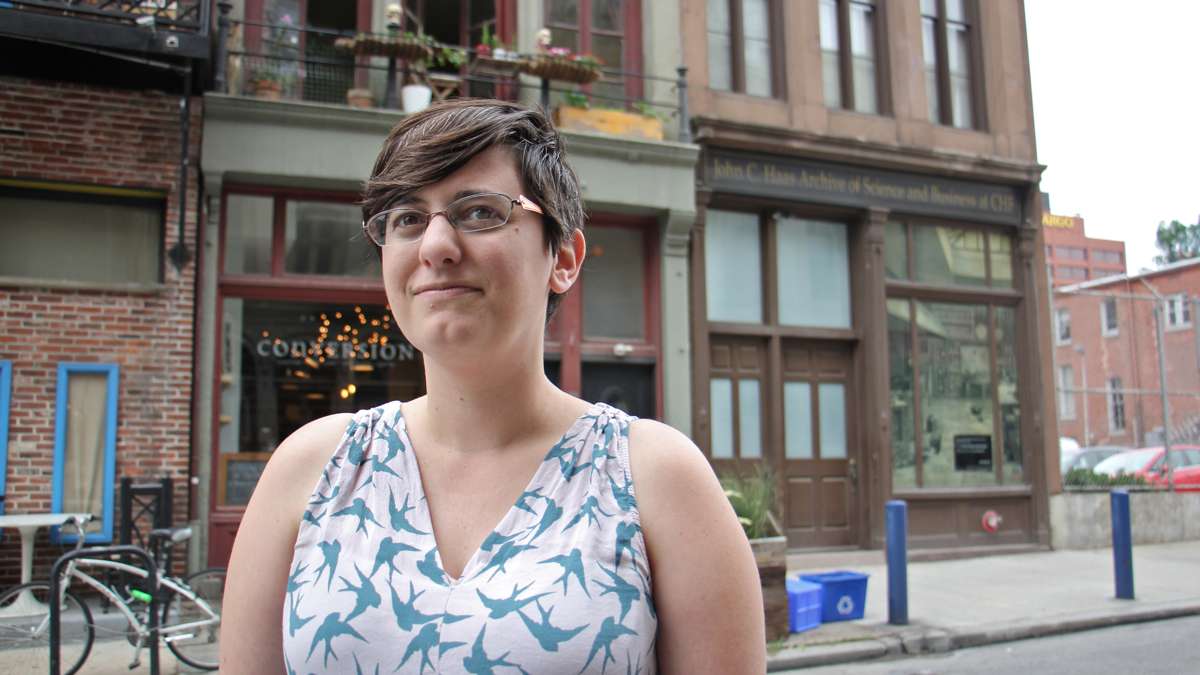
Rebecca Ortenberg produced the Chemical Heritage Foundation's walking tour, ''Things Fall Apart,'' a look at the science and philosophy of preservation in Philadelphia's Old City neighborhood. (Emma Lee/WHYY)
A new audio walking tour of Philadelphia’s Old City guides people through historic preservation hot spots with their phones.
The Chemical Heritage Foundation, at 3rd and Chestnut Street in Old City, is the force behind the tour and currently has an exhibition about the science of preservation, “Things Fall Apart.” It describes how certain materials decay and ways to prevent it through chemistry.
Including Barbie Dolls.
“The torso is a different kind of plastic than the legs,” said CHF’s Rebecca Ortenberg. “So it decomposes in a weird way.”
Ortenberg is a program associate in charge of leading people out of the exhibition gallery, into the surrounding streets to explore the neighborhood. The audio tour she coordinated is mostly about ethical and cultural issues of preservation, not so much material science of falling apart.
“We are a history of science institution. We tend to approach science sideways, finding new ways to approach those questions,” she said.
The audio guide is part of the Detour mobile app. Once downloaded, it is driven by your phone’s GPS, so it knows where you are standing and how long it takes you to walk to the next location.
If you were standing, for example, at Jeweler’s Row, at 7th and Sansom streets, the app will describe the relevant preservation issues at that spot.
“In August 2016, the Toll Brothers real estate company announced a plan to build a residential tower in the middle of Jeweler’s Row,” recites the app’s narrator, Elisabeth Berry Drago, also the curator of “Things Fall Apart.”
Drago, with an audio clip from an interview with Paul Steinke of the Preservation Alliance for Greater Philadelphia, describe the public resistance to development tampering with the historic character of Jeweler’s Row.
“You might be able to see some Save Jeweler’s Row signs in the windows,” said Drago on the app. What is not mentioned is there are also pro-development signs in some windows on the block.
The audio tour takes a position: it has a pro-preservation stance, backed up by interviews with historians and preservationists that point out the potential problems with unchecked development.
The tour (complete with walking music to keep the stroll jaunty) leads users to 5th and Walnut, where a 19th century stone façade of the Pennsylvania Fire Insurance Building seems to float in front of a 1970s glass skyscraper. It serves no structural or architectural purpose, only as a clever material contrast to the modern building.
It describes “facadism,” where the old façade become pure decoration for a new building. The voice of Steinke to explain that about three quarters of the city’s building stock was built before World War II.
“It’s unrealistic to think we can demolish three quarters of the city as a strategy for renewing it,” he said. “The strategy for renewing it must include a strategy for finding new uses for old buildings.”
The Chemical Heritage Foundation, itself, is guilty of facadism with its archival library. It bought a crumbling building on third street and completely destroyed it, saving only the historic facade, in order to build a state-of-the art archival storage system.
The app takes on broader issues of how the built environment influence’s the city’s cultural narrative. Take the case of Benjamin’s Franklin’s grave, at 5th and Arch streets. After he died, his descendants lobbied Christ Church to remove a portion of the stone wall running along the sidewalk, so that his grave could be viewed by anybody walking past. To this day, people toss pennies to Franklin’s grave through an iron fence where a wall used to be.
The tour also takes subtle swipes at the National Park Service, which, in the mid-20th century, built new brick structures along Walnut Street in the style of colonial townhouses, and passed them off as original. It was part of a policy to accentuate the neighborhood’s 18th century assets, sometimes at the expense of its 19th century architectural gems.
The audio app also gives the NPS props for its bold interpretation of the President’s House on Independence Mall, as a site of enslavement. The attraction, holding pride of place next to the Liberty Bell, shifts the cultural narrative of Mall by describing a dark and uncomfortable reality of colonial America.
WHYY is your source for fact-based, in-depth journalism and information. As a nonprofit organization, we rely on financial support from readers like you. Please give today.





